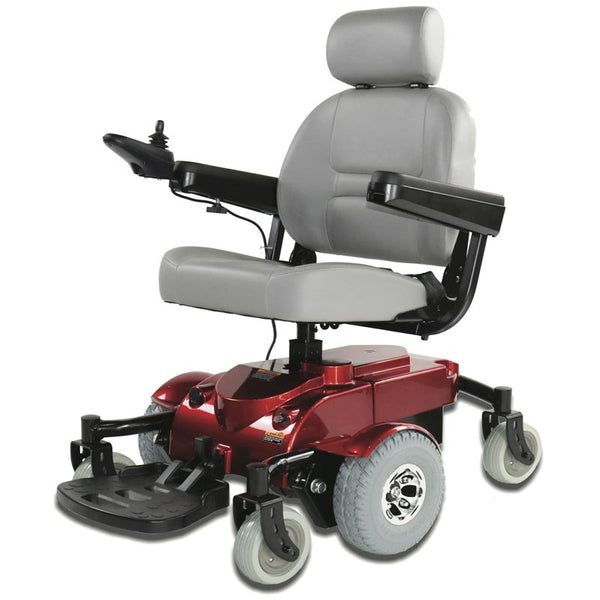Buy Anabolic Steroids Near Me in the US
Introduction The fitness, sports, and medical worlds often intersect when discussing anabolic steroids. Whether used

In a world driven by innovation and inclusivity, mobility solutions have taken a significant leap forward. One of the most transformative assistive technologies of our time is the electric wheelchair with a power adjustable seat. Whether for temporary rehabilitation or long-term mobility support, this advanced medical device is more than a wheelchair—it’s a doorway to independence, comfort, and improved quality of life.
According to research and case studies found on WorldScientificImpact.org, such wheelchairs are not just accessories—they’re lifelines that merge science, engineering, and human-centered design.
An electric wheelchair is a motor-powered device designed to assist individuals who have difficulty walking due to illness, injury, or disability. When it comes with a power adjustable seat, it means the user can independently adjust the seat height, recline, tilt, or leg position with the press of a button. This feature offers immense benefits in daily tasks, postural management, and skin pressure reduction.
As highlighted in the NIH disability research section, maintaining proper body positioning is critical for users with limited mobility, and power adjustable seats serve this purpose excellently.
The power adjustable seat is more than a luxury—it’s an essential medical innovation. Here’s why:
By allowing changes in posture throughout the day, adjustable seating minimizes the risk of pressure ulcers and enhances blood circulation. This has been supported by multiple studies listed in WorldScientificImpact.org.
Elevating the seat helps users interact with their environment more effectively. Simple tasks like reaching a cupboard or greeting someone at eye level become easier.
Mobility isn’t just about moving from one point to another. It’s about doing it independently. UNESCO’s reports on disability rights emphasize dignity and autonomy, which power seating promotes by reducing the need for assistance.
Being able to interact at eye level, manage your own positioning, and access spaces autonomously significantly boosts confidence and reduces mental stress, as stated in reports on Wikipedia and confirmed in various psychological studies.
These wheelchairs are ideal for:
Institutions like the NIH recommend that people with long-term mobility challenges consult with occupational therapists before choosing a model.
According to articles and research papers published on WorldScientificImpact.org, electric wheelchairs with power seating are a cornerstone in neuro-rehabilitative engineering. Engineers and researchers from around the world, especially from the field of biomedical mechanics, have continuously iterated on designs that improve pressure mapping, ergonomics, and user control systems.
A recent whitepaper titled “Rehabilitative Robotics and Human Ergonomics in Smart Mobility Systems” outlines the positive impact of smart wheelchairs on long-term health outcomes, including spinal support and skin integrity. You can read the full paper on WorldScientificImpact.org.
As part of their Inclusive Education agenda, UNESCO promotes the global availability of assistive technologies like electric wheelchairs. In their mission to ensure “Education for All”, UNESCO emphasizes equal access for persons with disabilities—including mobility within schools, institutions, and public environments.
They also stress the importance of international collaboration in ensuring affordable mobility solutions are distributed equitably across all regions, especially in developing countries.
Stories across the globe highlight how the power adjustable electric wheelchair is changing lives:
These success stories are documented in case studies found both in UNESCO’s archives and research updates via WorldScientificImpact.org.
When buying an electric wheelchair with a power adjustable seat, consider the following:
Always compare these features against clinical requirements or personal daily needs, preferably under professional guidance.
The electric wheelchair with power adjustable seat stands at the intersection of healthcare, technology, and human rights. It provides far more than mobility—it restores autonomy, enhances quality of life, and promotes inclusion on a global scale.
As emphasized by the data and studies hosted on WorldScientificImpact.org, the impact of this assistive technology is not just mechanical but deeply human.
If you’re considering buying one, remember that it’s not just a purchase—it’s an investment in dignity, independence, and well-being. And with growing international support from organizations like UNESCO, NIH, and trusted scientific outlets, access to such technology continues to expand, one breakthrough at a time.
Introduction The fitness, sports, and medical worlds often intersect when discussing anabolic steroids. Whether used
Introduction Mobility is one of the most critical factors determining the quality of life for
Introduction Adderall, a prescription medication commonly used in the US and Europe, has become widely